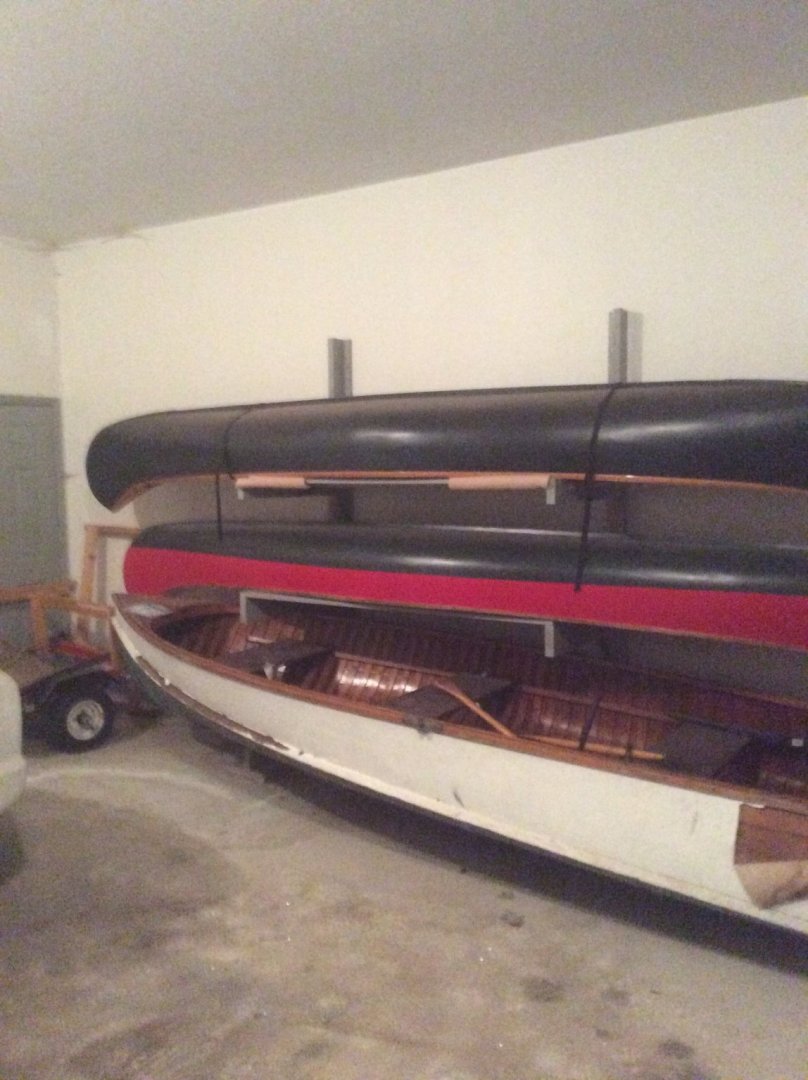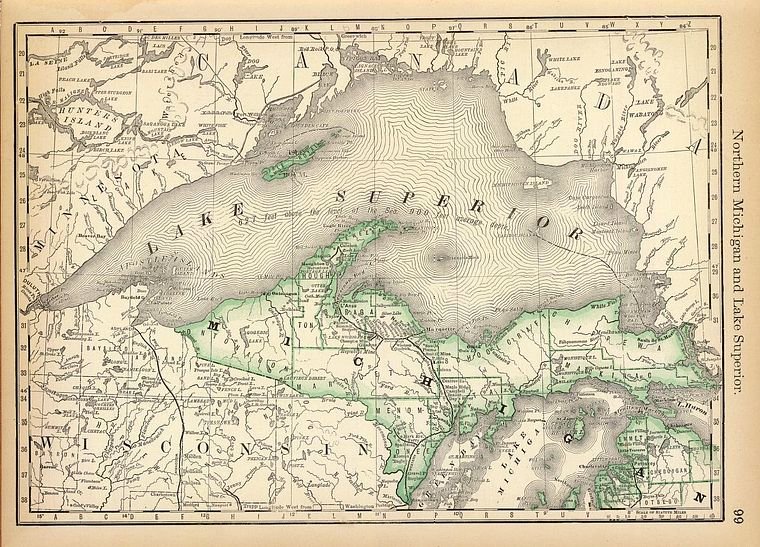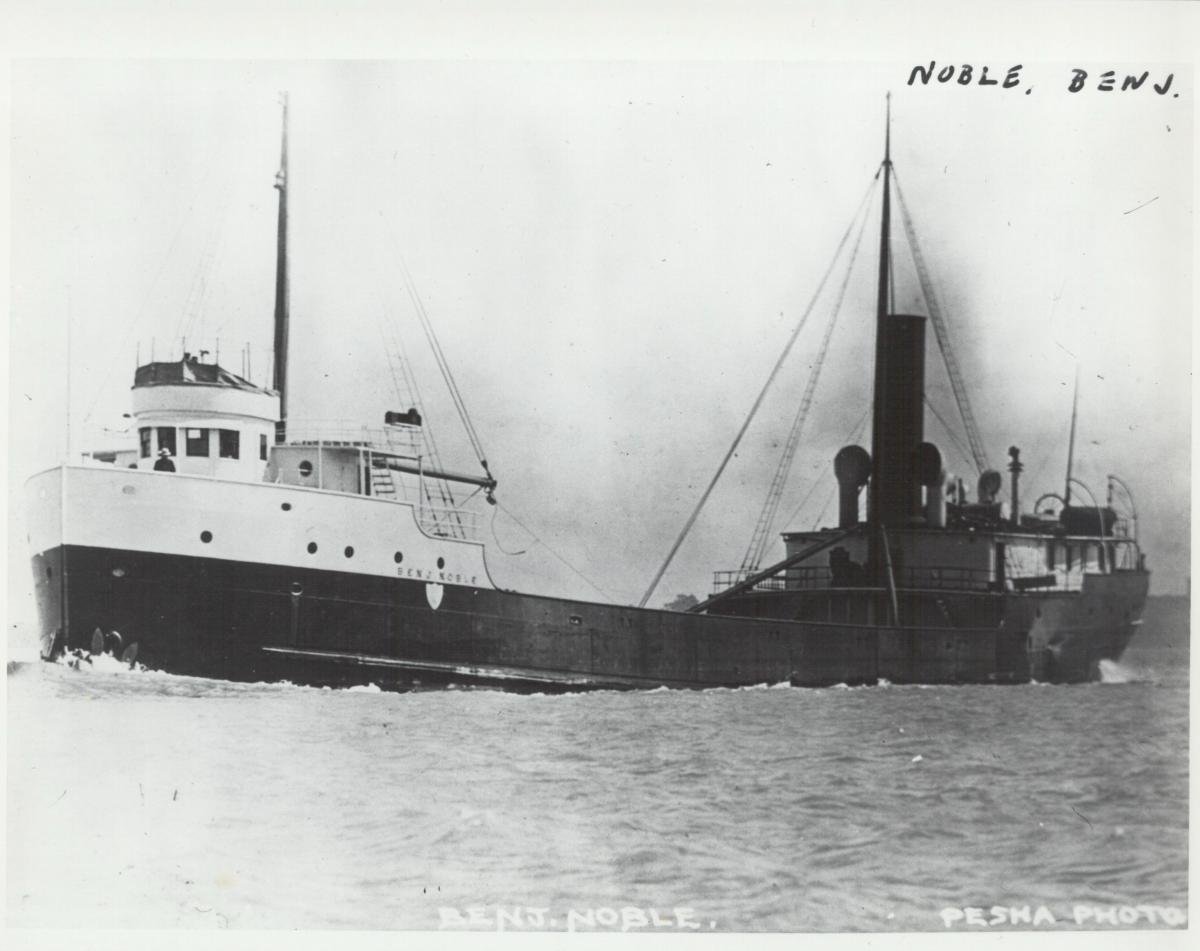
Roger Pellett
NRG Member-
Posts
4,519 -
Joined
-
Last visited
Content Type
Profiles
Forums
Gallery
Events
Everything posted by Roger Pellett
-
Not being a plastic modeler, I am fascinated by the expertise, skill, and attention to detail that ALL of you guys possess. The few plastic models that I built back in the day were glue smeared messes. Maybe, someone should start a new thread: I’ll show you my army if you’ll show me yours. I’m sure that they would be impressive! We would then need an umpire to decide who would win the war. Roger
-
Very nice canvasing job. You used the “upside down system”. Joe Seliga, the legendary canoe builder from Ely, Minnesota used this system. Beautiful results, no wrinkling. Roger
- 69 replies
-
- canoe
- restoration
-
(and 1 more)
Tagged with:
-
Jointer question/recommendation
Roger Pellett replied to davec's topic in Modeling tools and Workshop Equipment
There are a number of old Delta 4in jointers listed on EBay. New blades and bearings are also available. One major advantage of old power tools is that they are belt driven from a separate motor. Some of the new small DIY jointers have integral motors. If the motor on one of the older machines dies or if the machine is underpowered, the motor can be easily replaced. Roger -
When the new 1980 Flying Fish plans came out, their author, Ben Langford published a copy and article in the Nautical Research Journal. You should be able to get a copy from the office. Roger
-
The mystery padeye, How about an attachment point for a block to sheet home a large reaching “fisherman” Staysail? Roger
-
Jointer question/recommendation
Roger Pellett replied to davec's topic in Modeling tools and Workshop Equipment
I have a Delta Rockwell 4” Jointer that I bought new in the late 1970’s. It is a great tool. It is solidly built, all cast iron. Over the years, I have used it to mill parts for restoring four wooden canoes, and for reducing rough sawn lumber to billets for ship model building. I have also used it for building ship model glass cases. I do not build furniture or cabinetry. I have never needed anything larger. if you can find one of these used that can be cleaned up you will have a real workhorse. In my opinion, “vintage” power tools are much better tan most new ones as they don’t contain plastic parts. i will be down in my workshop later today and I’ll send you a photo. Roger -
Virginia Ruth by Kelpie - RESTORATION
Roger Pellett replied to Kelpie's topic in - Build logs for subjects built 1851 - 1900
Do you intend to try to sail this or do you intend it as a static display model. The model is what would be called a Pond Yacht and if you google vintage pond yachts there is a lot of material on the web. EXCEPT, your model is much older! The classic Pond Yachts of the 1930’s and ‘40s were Marconi rigged. Yours is Gaff Rigged. I think that this is a real gem, especially given its history. As a static model you should pretty much be able to duplicate the rigging from your photos. I would worry less about what is “correct” and more about duplicating your Greatgrandfather’s work. Roger- 21 replies
-
- virginia ruth
- sloop
-
(and 1 more)
Tagged with:
-
I didn’ Work on either steadily so the each took one to two years. Roger
- 69 replies
-
- canoe
- restoration
-
(and 1 more)
Tagged with:
-
Virginia Ruth by Kelpie - RESTORATION
Roger Pellett replied to Kelpie's topic in - Build logs for subjects built 1851 - 1900
To me, the charm of this model is the fact that your Great Grandfather built it and it’s 1913 craftsmanship. I would, therefore, keep and use all of the 1923 metalwork including the rigging attachment points.- 21 replies
-
- virginia ruth
- sloop
-
(and 1 more)
Tagged with:
-
Two examples of the real thing: The top canoe is a 1915 Old Town Charles River. Old enough to still have “closed gunwales. The rib tops are feathered to nothing and the inwale butts close to the planking, covered with a cap strip. A #@$& to restore as many of the rib tops had rotted making it difficult to reastablish an accurate sheer line. The bottom canoe is a 1944 Old Town Otca. Both canoes we’re restored by me to factory specs using production records obtained from WCHA. Every Old Town canoe bears a unique serial number stamped into the inner stem.
- 69 replies
-
- canoe
- restoration
-
(and 1 more)
Tagged with:
-
If you look at Jim’s canoe above, the outwale is a small delicate piece that protects the canvas. The lip should not cover the slots formed br the ribs and inwale. The lip full size maybe 1/8in thick. If you want to try canvasing the canoe, I would suggest model aircraft silkspan, also called modelspan or oriental rice paper. Glue only to the edges, don’t use mastic and then spray lightly with water to shrink it. You should be able to find the procedure for doing the real thing on the web which you can duplicate in miniature. Roger
- 69 replies
-
- canoe
- restoration
-
(and 1 more)
Tagged with:
-
I can’t imagine “canvassing” a small canoe like this. I would suggest that a good paint job would work better. As you can see from Jim’s post above of his lovely canoe you really can’t see the canvas on the finished thing. Jim, What model of old Town is this? Roger
- 69 replies
-
- canoe
- restoration
-
(and 1 more)
Tagged with:
-
A trivial detail that you might want to include. As a strength member, thwarts are bolted tight to the underside of the gunwale, but canoe seats are hung from the gunwale on overlength bolts with wooden spacers. The stern seat is higher than the bow seat. Exact spacing depends on the height of the paddlers. Roger
- 69 replies
-
- canoe
- restoration
-
(and 1 more)
Tagged with:
-
“The legend lives on from the Chippewa of the big lake they call Gitchi Gummi. Superior it’s said never gives up its dead when the gales of November come early.” Gordon Lightfoot “The wreck of the Edmund Fitzgerald” 1979 Freeboard: The vertical distance from a vessel’s waterline to the upper deck, measured at the lowest point where water can enter. Chapter 1- THE LAKE In his classic 1941 children’s book Paddle to the Sea, author Holling C. Holling describes Lake Superior as being shaped like the head of a wolf. Sault Saint Marie ( the SOO) where the lake discharges into Lake Huron via the St Marys River at its Eastern End is its neck. The Kewanee Penninsula jutting out into the lake from its south shore is the wolf’s mouth and Isle Royal off the lake’s north shore is its eye. At the extreme western end of the lake, the tip of the wolf’s nose are the “twin ports” of Duluth, Minnesota and Superior Wisconsin. This side by side array of docks handles more cargo (by tonnage) than any other port on the five Great Lakes. Even today, when cargo is handled by fewer but larger vessels over 800 ships arrived at and departed from the Ports during the eight month shipping season. Most of the time the waters in the 80 mile funnel shaped arm leading to the Twin Ports are rather placid, but as Gordon Lightfoot haunting ballad says, the lake can be swept by vicious gales; not just in November but also in the spring. The storms that are most dangerous to mariners approaching the Twin Ports are Northeasters as they sweep down the lake from its eastern end 350 miles away and this “fetch” can build up huge waves that can completely engulf the Duluth Harbor entry. On the night of April 26,1914 the 250ft long Steamship Benjamin Noble found herself battling just such a storm while headed for Duluth to deliver a cargo of railroad rails to be used in the construction of the Great Northern Railroad. She was badly overloaded to the point where she had almost no freeboard. In 1914 there were no freeboard regulations for ships on the Great Lakes. Captains were expected to use their judgement. In this case, the Noble’s 31 year old captain was under pressure to deliver the entire shipment in one load. Times were tough and John Francombe, representing the owners had used a “sharp pencil” to prepare the bid. Replying to the “Dock Wallopers” watching her load at Conneaut, Ohio on Lake Erie, Captain John Eisenhardt said that he would be safe as he planned to hug the shore all the way. His plan seemed to work. He crossed Lake Erie, sailed up the Detroit River, sailed up the length of Lake Huron and locked through the SOO Canal into Lake Superior. On Lake Superior he probably transited the canal that bisects the Kewanee Pensula and wound up among the sheltered waters of the Apostle Islands. Leaving the Apostle Islands, though, the compass course to Duluth is due west through completely unprotected waters. As he entered the western arm of the lake on the final 80 mile run to Duluth he was hit by a violent Northeaster. Winds of over 65 miles per hour were clocked at Duluth that wrecked several Harbor structures. These winds would have hitting the Noble on her starboard quarter, but Captain Eisenhardt was now committed and plodded on passing Two Harbors, 26 miles northeast of Duluth at night. Somewhere between Two Harbors and Duluth, the Benjamin Noble and her crew of 20 men vanished, despite the fact that two other vessels were close enough to see her lights. The next day the Noble’s loss was confirmed when empty life raft and hatch covers whith her name washed up on Duluth’s Park point beach. As Gordon Lightfoot says, Lake Superior never gave up her dead as no crewmen or their remains were ever found. For 90 years, the Noble was one of Lake Superior’s most famous Ghost Ships. Then in 2005 a group of dedicated shipwreck hunters found her about 20 miles northeast of Duluth in over 300ft of water. The wreck is headed at a compass bearing of 20 degrees. The wreck has been entered on the National Register of Historic Places and is hopefully protected from shipwreck looters. This Model has been in the works for longer than the short life of the actual ship. This will be the second time that I have taken the model down from the shelf and resumed work. Hopefully this build log will keep me going. In the next two chapters I will describe the ship, her historic context, and the research that I did. Then we’ll get into actual model building. Somewhere along the line I’ll make some educated guesses about how the wreck actually happened. Stay tuned! Roger
-
In the 1990’s the Israelis were building a number of large coal fired power stations along the Mediterranean sea coast and the company that I worked for had just completed a job to provide the high pressure steam and feed water piping for the plant built at Askalon. These contracts required that a percentage of the fabrication labor be provided locally. With more projects on the horizon, In 1986 our Israeli agent put me in touch with a plant in Israel that rebuilt tanks and I visited it to see if they could fabricate high pressure piping. It was an interesting place, as they had an assortment of tanks from allies as well as adversaries- British, American, and Russian, and of course they were being “upgraded” with all sorts of innovations, some of which they were careful not to let me see. I also saw several of the huge Israeli designed and built Merkava tanks being transported on the highway. Like many things it’s hard to imagine their size without seeing the real thing. Roger
-
Since I don’t know what sort of equipment you gave this may be totally out in left field but I’m offering it anyway. By far the easiest way to carve a ship model hull is to carve two half models, to be glued together after they have been shaped. The benefit of this method is that each half has a flat datum to work from that can be laid on a flat surface when checking with templates. The “precarved hulls” advertised by kit manufacturers are hard to shape because there is no obvious datum or reference point to measure from. If you have access to a bandsaw, you might try slicing your sacrificial hull down the center and shaping each half individually. Roger
-
Like the rest of the fleet they would have sailed or probably rowed south through the British line that night and temporarily escaped into the open lake, One of the several incredible incidents of the American Revolution. By the time the British realized that they were gone it took them several days to catch up and to destroy the Americans (one of the other Gondolas, Spitfire, has been found out in the open lake). The effect of Arnold’s hastily constructed fleet was to delay the British beyond the end of the summer campaigning season buying another year. When the British tried a year later under Burgoyne they got bogged down in the wilderness south of Fort Ticonderoga and the better organized Americans defeated and captured them at Saratoga. As another fanous general once said, “It was a close run thing.” Those wishing to read a great piece of historic fiction about Arnold’s fleet and the Saratoga Campaign should get a copy of Rabble in Arms by Kenneth Roberts. Roger
-
Somewhere I read that one of the Dutch Shipyards’ competitive advantages was the early availability of wind powered sawmills to produce sawn planks vs sawing them by hand over a saw pit. Their lumber was also imported from the Rhine and the Baltic. I would, therefore, not think that these vessels were built from inferior lumber. Roger
- 332 replies
-
- fluit
- abel tasman
-
(and 1 more)
Tagged with:
-
Weaving a cane seat is not difficult. You could drill holes around the perimeter and weave a seat using appropriate colored thread. Try looking up chair caning instructions on the web. Roger
- 69 replies
-
- canoe
- restoration
-
(and 1 more)
Tagged with:
-
Glue Recommendations
Roger Pellett replied to leehound's topic in Modeling tools and Workshop Equipment
Pauline, You might also want to let your clients look at the model kits and make a recommendation. assuming that they are elderly you will find someone who built models earlier in life. Roger
About us
Modelshipworld - Advancing Ship Modeling through Research
SSL Secured
Your security is important for us so this Website is SSL-Secured
NRG Mailing Address
Nautical Research Guild
237 South Lincoln Street
Westmont IL, 60559-1917
Model Ship World ® and the MSW logo are Registered Trademarks, and belong to the Nautical Research Guild (United States Patent and Trademark Office: No. 6,929,264 & No. 6,929,274, registered Dec. 20, 2022)
Helpful Links
About the NRG
If you enjoy building ship models that are historically accurate as well as beautiful, then The Nautical Research Guild (NRG) is just right for you.
The Guild is a non-profit educational organization whose mission is to “Advance Ship Modeling Through Research”. We provide support to our members in their efforts to raise the quality of their model ships.
The Nautical Research Guild has published our world-renowned quarterly magazine, The Nautical Research Journal, since 1955. The pages of the Journal are full of articles by accomplished ship modelers who show you how they create those exquisite details on their models, and by maritime historians who show you the correct details to build. The Journal is available in both print and digital editions. Go to the NRG web site (www.thenrg.org) to download a complimentary digital copy of the Journal. The NRG also publishes plan sets, books and compilations of back issues of the Journal and the former Ships in Scale and Model Ship Builder magazines.




